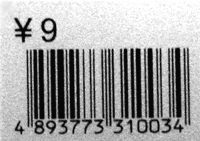|
Won Sign
The won sign , is a currency symbol. It represents the South Korean won, the North Korean won and, unofficially, the old Korean won. Appearance Its appearance is "W" (the first letter of "Won") with a horizontal strike going through the center. Some fonts display the won sign with two horizontal lines, and others with only one horizontal line. Both forms are used when handwritten. Encoding The Unicode code point is : this is valid for either appearance. Additionally, there is a full width character at . Microsoft Windows In Microsoft Windows code page 949, the position (backslash) is also used for the won sign. In Korean versions of Windows, many fonts (including system fonts) display the backslash character as the won sign. This also applies to the directory separator character (for example, ) and the escape character(₩n). Most Korean keyboards input when the won sign key is pressed, so the Unicode letters are rarely used. The same issue (of dual use of a code p ... [...More Info...] [...Related Items...] OR: [Wikipedia] [Google] [Baidu] |
|
 |
South Korean Won
The Korean Republic won, unofficially the South Korean won (Symbol: ₩; Code: KRW; Korean: 대한민국 원) is the official currency of South Korea. A single won is divided into 100 jeon, the monetary subunit. The jeon is no longer used for everyday transactions, and it appears only in foreign exchange rates. The currency is issued by the Bank of Korea, based in the capital city of Seoul. Etymology The old "won" was a cognate of the Chinese yuan and Japanese yen, which were both derived from the Spanish-American silver dollar. It is derived from the hanja (, ''won''), meaning "round", which describes the shape of the silver dollar. The won was subdivided into 100 ''jeon'' (), itself a cognate of the Chinese unit of weight mace and synonymous with money in general. The current won (1962 to present) is written in hangul only and does not officially have any hanja associated with it. First South Korean won History The Korean won, Chinese yuan and Japanese yen were ... [...More Info...] [...Related Items...] OR: [Wikipedia] [Google] [Baidu] |
 |
Yen Sign
The yen and yuan sign, ¥, is a currency sign used for the Japanese yen and the Chinese yuan currencies when writing in Latin scripts. This monetary symbol resembles a Latin letter Y with a single or double horizontal stroke. The symbol is usually placed before the value it represents, for example: ¥50, or JP¥50 and CN¥50 when disambiguation is needed. When writing in Japanese and Chinese, the Japanese kanji and Chinese character is written following the amount, for example in Japan, and or in China. Code points The Unicode code point is . Additionally, there is a full width character, , at code point for use with wide fonts, especially East Asian fonts. There was no code-point for this symbol in the original (7-bit) US-ASCII and consequently many early systems reassigned (allocated to the backslash (\) in ASCII) to the yen sign. With the arrival of 8-bit encoding, the ISO/IEC 8859-1 ("ISO Latin 1") character set assigned code point to the ¥ in 1985; Unicode co ... [...More Info...] [...Related Items...] OR: [Wikipedia] [Google] [Baidu] |